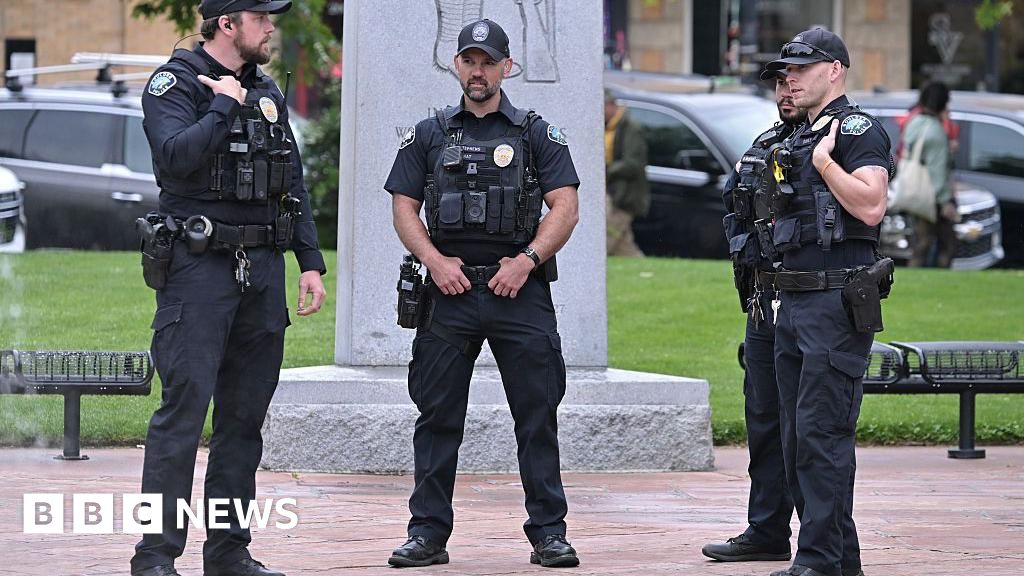ARTICLE AD BOX
Tropical storm Idalia threatens parts of Cuba and Florida
By Madeline Halpert
BBC News, New York
Florida and Cuba are bracing for Tropical Storm Idalia, which is expected to intensify into a dangerous Category 3 hurricane, forecasters say.
Idalia is expected to gain hurricane force on Monday before making landfall in Big Bend, Florida, on Wednesday, the National Hurricane Center (NHC) said.
Another storm, Franklin, may bring life-threatening storm surges to the US East Coast and Bermuda.
It comes as the Atlantic hurricane season nears its peak.
Franklin is the first major hurricane of the season, which runs from June to November. It is currently a Category 4 storm, packing 145mph (230km/h) winds, but is expected to weaken by midday Tuesday, said the NHC.
For now, Florida is focused on Idalia, with Governor Ron DeSantis warning the state should brace for "major impacts" from the storm.
"This is going to be a powerful hurricane," he said at a news conference on Monday.
"This is absolutely going to impact the state of Florida in many, many ways."
President Joe Biden has approved an emergency declaration for the state in preparation for the storm.
Idalia is travelling north at 8mph with maximum sustained winds of 65mph, the NHC said at 11:00 EDT (15:00 GMT) on Monday.
It could bring "life-threatening" storm surges and "hurricane force winds and scattered flash and urban flooding" to parts of the west coast of Florida and the Florida Panhandle as soon as Tuesday, the agency said.
The NHC noted that Idalia has been moving "erratically".
The storm is expected to drench western Cuba with 4-7in (10-18cm) of rain and bring dangerous storm surges there as well. A hurricane watch is in effect for the city of Pinar del Río in Cuba.
Idalia was 80 miles (125km) west of Cuba on Monday morning.
Storm surges of up to 11ft (3.3m) are forecast for some north-western Florida towns.
Hurricanes: Are they getting more violent?
"The deepest water will occur along the immediate coast in areas of onshore winds, where the surge will be accompanied by large and dangerous waves," the NHC said.
Tampa International Airport will be closed from noon local time on Tuesday in preparation for the storm.
Florida's governor has declared a state of emergency in 46 counties, across the northern half of the state.
Mr DeSantis said several counties on the Gulf Coast would be forced to evacuate because of Idalia, while schools would also close.
He encouraged Florida residents living in low-lying coastal areas to seek higher ground.
"Floridians, you need to be executing your plans now," he said.
The governor said more than 1,100 National Guardsmen had been mobilised with 2,400 high-water vehicles and other rescue equipment.
State officials also warned that many residents in the area would be without power as the storm took hold.
The states of Georgia, North Carolina and South Carolina could see heavy rainfall as well, forecasters said.
Tropical storm Idalia comes less than a year after Hurricane Ian made landfall on Florida's west coast, killing over 100 people.
The impact of climate change on the frequency of tropical storms is still unclear, but increased sea surface temperatures warm the air above and make more energy available to drive hurricanes. As a result, they are likely to be more intense with more extreme rainfall.

 1 year ago
87
1 year ago
87








 English (US) ·
English (US) ·